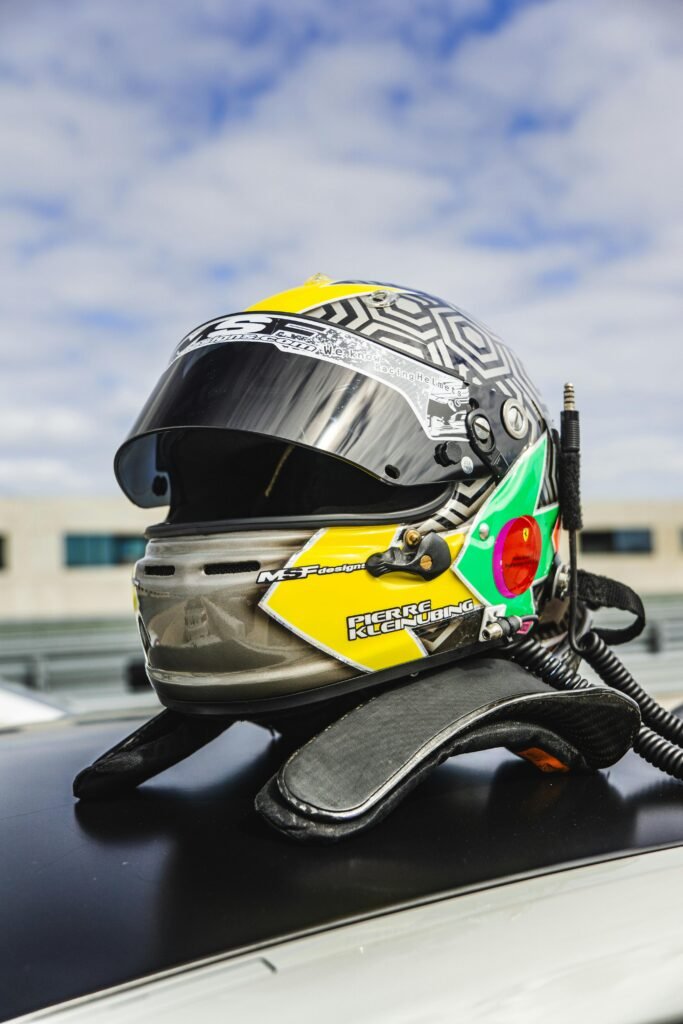Maintaining the longevity of your tires is essential for ensuring a smooth and safe driving experience. From checking tire pressure to regular rotation, there are several simple steps you can take to maximize tire durability. This article will explore a few helpful tips that can help you achieve just that, keeping your tires in optimal condition for the long haul. Stay tuned for expert advice on preserving the lifespan of your tires, making your daily journeys safer and more economical.

This image is property of images.pexels.com.
Proper Tire Inflation
Check tire pressure regularly
One of the most important aspects of tire maintenance is regularly checking your tire pressure. Proper tire inflation not only ensures a smoother and safer ride but also extends the lifespan of your tires. You should check your tire pressure at least once a month and before long trips.
Maintain recommended tire pressure
Every vehicle comes with a recommended tire pressure, which can usually be found in the owner’s manual or on a sticker located on the driver’s side door jamb or inside the fuel filler door. It’s crucial to maintain the recommended tire pressure, as underinflated or overinflated tires can result in poor handling, reduced fuel efficiency, and even tire failures.
Avoid overinflation
Overinflating your tires can lead to a harsher ride, decreased traction, and uneven tire wear. It may seem like higher pressure would provide better performance, but it’s important to stick to the manufacturer’s recommended pressure for optimal safety and tire longevity.
Avoid underinflation
Driving on underinflated tires is equally harmful. It can cause excessive heat buildup, which leads to tire failure and decreased fuel efficiency. Underinflated tires also wear down faster on the edges, compromising the tire’s overall lifespan. Make it a habit to check your tire pressure regularly and maintain the recommended levels for safe and efficient driving.
Regular Tire Rotation
Rotate tires every 5,000 – 7,000 miles
Regular tire rotation is crucial to ensure even wear on your tires. It is recommended to rotate your tires every 5,000 to 7,000 miles, depending on the type of vehicle and driving conditions. By swapping the front and rear tires, you distribute the workload evenly, maximizing their lifespan and performance.
Follow the recommended rotation pattern
Different vehicles have specific rotation patterns, such as front-to-back, side-to-side, or diagonal. It’s essential to consult your vehicle’s manual or a tire professional to determine the correct rotation pattern for your specific vehicle. Following the recommended rotation pattern ensures that your tires wear down uniformly, providing better traction and handling.
Equalize tire wear
Tires tend to wear down differently depending on their position on the vehicle. Front tires, for example, are prone to wear on the shoulder due to steering, while rear tires may wear more evenly across the tread. By regularly rotating your tires, you equalize the wear and help them last longer. This not only saves you money in the long run but also ensures better performance and safety.
Extend tire life
By rotating your tires regularly, you can significantly extend their lifespan. Even wear patterns and proper maintenance contribute to durable tires that provide better fuel efficiency, improved handling, and a smoother ride. Make tire rotation a part of your regular maintenance routine and enjoy the long-lasting benefits it brings.
Proper Wheel Alignment
Check and adjust wheel alignment
Proper wheel alignment is crucial for maintaining tire longevity and ensuring safe handling. Checking and adjusting the wheel alignment should be done regularly, especially when you notice signs of uneven tire wear or drifting while driving. It’s recommended to have your wheel alignment professionally inspected and adjusted every 12,000 miles or as directed by your vehicle’s manual.
Prevent uneven tire wear
Misaligned wheels can cause uneven tire wear, resulting in the need for premature tire replacement. Over time, misalignment can cause the tires to wear down on one side more than the other or in specific areas, leading to reduced traction and compromised safety. By ensuring proper wheel alignment, you allow the tires to make consistent contact with the road surface, reducing uneven wear and extending their lifespan.
Improve handling and fuel efficiency
Proper wheel alignment not only extends tire life but also improves your vehicle’s handling and fuel efficiency. Misaligned wheels can cause your vehicle to pull to one side, making it more difficult to control and compromising your safety. Additionally, when your wheels are properly aligned, your vehicle experiences less rolling resistance, leading to improved fuel efficiency.
Extend tire lifespan
Investing in regular wheel alignment will reward you with longer-lasting tires. By preventing uneven wear and ensuring optimal contact with the road, you can significantly extend the lifespan of your tires. Wheel alignment is a worthwhile investment that enhances safety, handling, fuel efficiency, and overall tire durability.
Balancing Tires
Balance tires regularly
Tire balancing is a crucial step in tire maintenance to ensure a smooth and comfortable ride. Wheels and tires can have slight imbalances, which can cause vibrations, uneven wear, and ultimately decrease the lifespan of your tires. It’s recommended to have your tires balanced every 6,000 miles or whenever you purchase new tires or notice vibrations while driving.
Reduce vibrations and uneven wear
Even slight imbalances in your tires can lead to noticeable vibrations while driving. These vibrations not only compromise your driving comfort but also contribute to uneven wear on your tires. Tire balancing effectively eliminates these imbalances, reducing vibrations and allowing for a smoother and more enjoyable ride. Smooth and balanced tires also experience less stress, resulting in more even wear patterns and an extended tire life.
Improve ride quality
Balanced tires provide a more comfortable ride. By eliminating vibrations, your vehicle will drive more smoothly, allowing you to enjoy a quieter and more pleasant driving experience. When your tires are balanced, you’ll notice improved stability and better overall handling, ensuring safer journeys for you and your passengers.
Extend tire life
Regular tire balancing is an excellent investment to extend the lifespan of your tires. By eliminating vibrations and reducing uneven wear, balanced tires wear more evenly and last longer. This not only saves you money on premature tire replacements but also ensures optimal performance, safety, and fuel efficiency throughout the life of your tires.

This image is property of images.pexels.com.
Avoiding Overloading
Do not exceed load ratings
Each tire has a maximum load rating specified by the tire manufacturer. It’s crucial to understand and follow these load ratings to prevent overloading your tires. Exceeding the load rating can lead to tire failure, reduced handling capabilities, and compromised safety. Before loading your vehicle, check the load ratings for your specific tires and ensure you are within the recommended limits.
Avoid placing excessive weight on tires
Overloading your vehicle by placing excessive weight on the tires can have detrimental effects. Not only can it cause the tires to wear down faster, but it also increases the risk of blowouts and other tire failures. Distribute the weight evenly across the vehicle and use additional support if necessary, such as roof racks or trailers. By avoiding excessive weight, you protect your tires and ensure your vehicle handles properly.
Prevent tire damage and premature wear
Overloading your tires puts excessive strain on them, leading to tire damage and premature wear. The added weight can cause the tires to overheat, leading to tread separation and blowouts. It also puts stress on the sidewalls, leading to cracking and reduced structural integrity. By adhering to load ratings and avoiding overloading, you prevent unnecessary tire damage and ensure they last longer.
Maintain proper vehicle handling
Overloading your vehicle can negatively impact its handling capabilities. The added weight shifts the vehicle’s center of gravity, making it more challenging to steer, brake, and maintain control in emergency situations. By avoiding overloading, you maintain proper vehicle handling and reduce the risk of accidents caused by compromised tire performance.
Proper Tire Storage
Store tires in a cool and dry place
Proper tire storage is essential for preserving their quality and longevity. When not in use, store your tires in a cool and dry place to prevent the rubber from deteriorating. Exposure to extreme heat, sunlight, and moisture can cause the rubber to age faster and deteriorate, resulting in decreased tire performance and safety.
Keep away from direct sunlight
Direct sunlight can cause the rubber in your tires to degrade more quickly. Ultraviolet (UV) rays weaken the rubber compounds, resulting in brittle and cracked tires. Store your tires in a shaded area or cover them with protective tire bags to shield them from the harmful effects of the sun. By doing so, you ensure that your tires stay in optimal condition for longer.
Protect from moisture and extreme temperatures
Moisture and extreme temperatures can have detrimental effects on your tires. High humidity can lead to moisture buildup inside the tire, causing corrosion and weakening of the internal components. Extreme temperatures, both hot and cold, can cause the rubber to expand or contract, leading to structural damage. Store your tires in a climate-controlled environment to protect them from these potential hazards.
Avoid contact with oil and chemicals
When storing your tires, it’s essential to keep them away from oil, gasoline, solvents, and other chemicals. These substances can cause the rubber to break down, leading to premature tire aging and compromised performance. Store your tires in a separate area and avoid any direct contact with these harmful substances.

This image is property of images.pexels.com.
Regular Tire Inspections
Inspect tires for signs of wear and damage
Regular tire inspections are crucial for identifying signs of wear and damage early on. Look for any uneven wear patterns, such as excessive tread wear on one side or in the middle. Inspect the sidewalls for cracks, bulges, or cuts, as these can weaken the tire’s structure and lead to potential failures. By catching these issues early, you can take necessary action to prevent further damage and ensure your tires remain safe and functional.
Check for tread depth
Tire tread depth plays a significant role in traction and safe driving. Use a tread depth gauge or the tried-and-true penny test to measure the depth of your tire’s tread. Place a penny into the tread with Lincoln’s head facing down. If you can see all of Lincoln’s head, it’s time to replace your tires. Adequate tread depth ensures better grip on the road, especially in wet or snowy conditions.
Look for cracks, bulges, or punctures
Inspecting your tires for cracks, bulges, or punctures is essential for identifying potential tire damage. Cracks along the sidewall or tread area can indicate aging or overexposure to the elements. Bulges or bubbles on the tire’s surface indicate internal damage and should be addressed immediately. Punctures can lead to slow leaks or blowouts and should be repaired promptly by a professional.
Replace damaged or worn tires
If you notice severe damage or excessive wear on your tires during inspections, it’s crucial to replace them promptly. Continuing to drive on damaged or worn tires compromises your safety and the performance of your vehicle. Replace tires that have significant tread wear, sidewall damage, or other signs of structural problems. Investing in new tires ensures optimal performance, safety, and longevity.
Avoiding Harsh Driving Conditions
Minimize driving on rough or unpaved roads
Driving on rough or unpaved roads can take a toll on your tires. Rough surfaces, potholes, and debris can cause damage to the tire tread and sidewall, leading to punctures or structural weakness. Whenever possible, choose well-maintained roads and avoid unnecessary off-road excursions to prolong the lifespan of your tires and maintain their integrity.
Avoid potholes and road hazards
Potholes and road hazards are notorious for causing tire damage. Driving over potholes or hitting road debris can result in punctures, sidewall damage, or even bent rims. Therefore, it’s essential to remain vigilant on the road and avoid these hazards whenever possible. If you can’t avoid a pothole, slow down and navigate around it carefully to minimize the impact on your tires.
Reduce stress on tires
Reducing stress on your tires is vital for prolonging their lifespan. Aggressive driving habits, such as sudden braking, hard acceleration, or taking corners at high speeds, can put excessive strain on your tires. By practicing smooth and cautious driving, you reduce the stress on your tires, making them last longer and perform better. Drive responsibly and enjoy the benefits of a longer tire life.
Prevent premature tire wear
Harsh driving conditions, including excessive braking or accelerating, can lead to premature tire wear. These habits can cause the tires to wear down more quickly, reducing their overall lifespan and compromising their performance. By avoiding harsh driving actions and adopting a smoother driving style, you can maintain proper tire health and minimize the need for premature replacements.
Proper Tire Cleaning
Clean tires regularly to remove dirt and debris
Regular tire cleaning is an essential part of tire maintenance. Dirt, dust, brake dust, and road grime can accumulate on your tires over time, affecting their appearance and potentially leading to corrosion. Cleaning your tires regularly helps remove these contaminants and keeps them in optimal condition.
Use mild soap and water
When cleaning your tires, it’s best to use a mild soap and water solution. Avoid using harsh chemicals, as they can deteriorate the rubber and cause damage. Use a soft-bristle brush or sponge to scrub away dirt and grime gently. Rinse thoroughly and dry with a clean towel to prevent water spots. By using gentle cleaning methods, you ensure that your tires stay clean and undamaged.
Avoid harsh chemicals
As mentioned, harsh chemicals can be detrimental to your tires. Bleach, solvents, and other abrasive chemicals can strip away protective layers, weaken the rubber, and lead to premature aging. Stick to mild soaps specifically designed for cleaning tires or seek recommendations from tire professionals. By avoiding harsh chemicals, you maintain the integrity of your tires and prolong their lifespan.
Prevent degradation of tire rubber
Regular tire cleaning not only keeps your tires looking their best but also prevents the degradation of rubber compounds. Dirt, road grime, and brake dust can contain corrosive substances that, if left untreated, can accelerate the breakdown of the tire rubber. By cleaning your tires regularly, you remove these harmful substances and contribute to the longevity and overall health of your tires.
Proper Tire Selection
Choose tires suitable for your vehicle and driving conditions
Choosing the right tires for your vehicle and driving conditions is crucial for optimizing tire durability. Consider factors such as the size, load range, and speed rating recommended for your vehicle. Additionally, if you drive in specific weather conditions, such as snow or rain, consider tires specifically designed for those conditions. Matching your tires to your vehicle and driving needs maximizes their lifespan and ensures optimal performance.
Consider tread life and traction
Tread life and traction are important considerations when selecting tires. Tread life refers to how long the tread will last before it wears down to the minimum safe level. Tires with longer tread life will last longer, while those with higher traction will provide better grip on the road. Strike a balance between tread life and traction that aligns with your driving style and needs.
Balance performance and longevity
When choosing tires, it’s important to strike a balance between performance and longevity. High-performance tires may offer superior grip and handling but may wear down more quickly. On the other hand, tires with a focus on longevity may not provide the same level of performance but can last longer. Consider your driving goals and habits to select tires that deliver the right combination of performance and longevity.
Consult tire professionals for guidance
If you’re unsure which tires are best suited for your vehicle and driving conditions, don’t hesitate to consult tire professionals. Tire experts can provide valuable guidance based on their knowledge and experience. They can assess your specific needs and recommend tires that will meet your requirements, ensuring optimal tire durability and performance.
By following these tips for maximizing tire longevity, you can enjoy safer, smoother, and more cost-effective driving. Proper tire inflation, regular tire rotation, wheel alignment, tire balancing, and avoiding overloading are all essential for maintaining tire health. Furthermore, proper tire storage, regular inspections, safe driving habits, and proper tire cleaning contribute to overall tire durability. Choosing the right tires for your vehicle and consulting tire professionals for guidance complete the comprehensive approach to maximizing tire longevity. Remember, a little care goes a long way when it comes to your tires!





